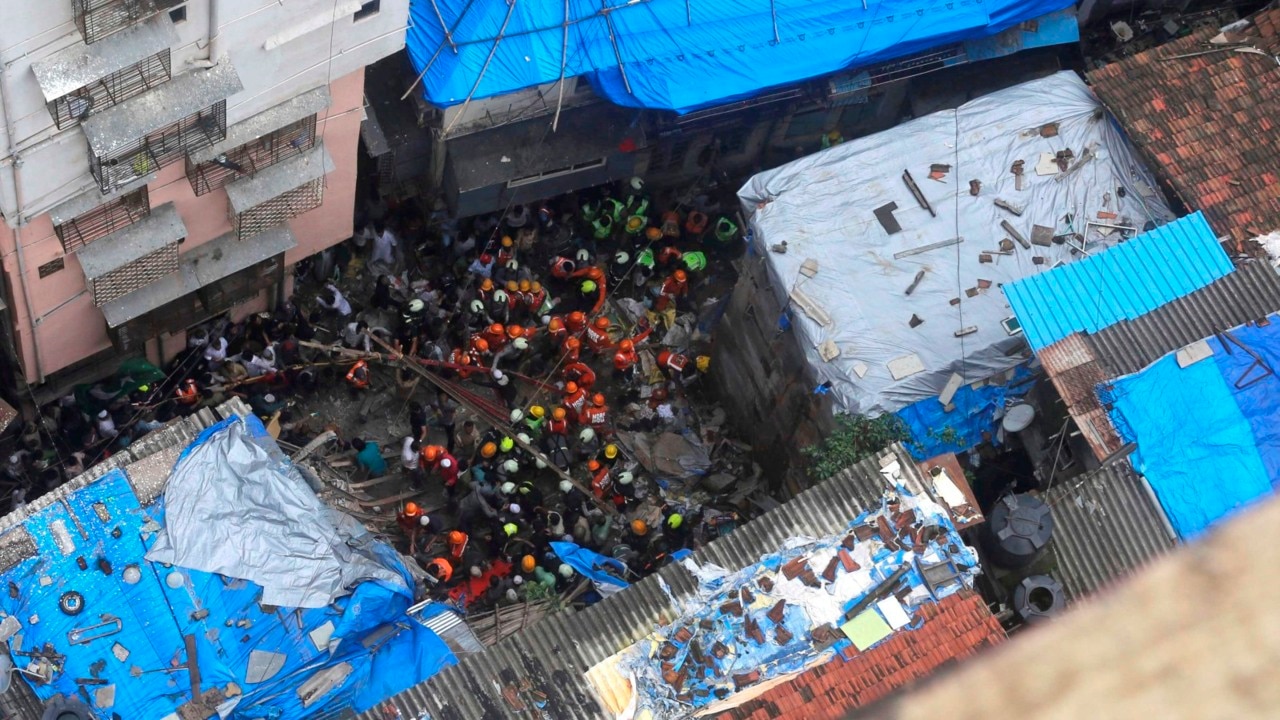


The recent collapse of a massive billboard in Mumbai, India, resulting in 16 deaths and over 75 injuries, has brought attention to the often overlooked impact of local weather events. This incident, caused by a localised dust storm and rain, highlights the need for better planning and preparation for multi-hazard weather events. With rising global temperatures, countries like India are experiencing more frequent and intense thunderstorms, making it crucial to address the potential damage they can cause.
The Impact of Localized Weather Events: A Case Study of Mumbai's Billboard Collapse
The recent tragic collapse of a massive billboard in Mumbai, India, which resulted in 16 deaths and over 75 injuries, has highlighted the often overlooked impact of local weather events. This incident, caused by a localized dust storm and rain, underscores the urgent need for better planning and preparation for multi-hazard weather events.
Background
India, like many other countries, is experiencing the effects of global climate change, which is leading to more frequent and intense weather events. Thunderstorms, which are characterized by heavy rainfall, lightning, and strong winds, are becoming increasingly common. These storms can pose significant risks to life and property, as demonstrated by the recent Mumbai tragedy.
Local Weather Conditions
On the day of the billboard collapse, Mumbai was experiencing a localized dust storm accompanied by heavy rain. Dust storms, which are common in arid and semi-arid regions, can cause poor visibility and strong winds. The combination of these conditions created a hazardous environment, which contributed to the failure of the billboard structure.
Urban Planning and Safety Measures
The Mumbai billboard collapse raises questions about the adequacy of urban planning and safety measures in place to withstand extreme weather events. In rapidly growing Indian cities, where urbanization is often haphazard, infrastructure and buildings may not be designed or maintained to withstand strong winds or other hazardous conditions.
Top 5 FAQs
1. What were the factors that contributed to the Mumbai billboard collapse?
2. What are the risks associated with thunderstorms?
3. How can we prepare for and mitigate the risks of thunderstorm events?
4. What is the role of climate change in increasing thunderstorm frequency and intensity?
5. What other weather-related disasters have occurred in India recently?
Conclusion
The Mumbai billboard collapse serves as a tragic reminder of the importance of preparing for and mitigating the risks associated with localized weather events. As climate change continues to intensify these risks, it is imperative that cities and communities around the world take proactive measures to ensure the safety of their residents and infrastructure.

A remote monitoring camera operated by the US Geological Survey captured stunning visuals of the recent volcanic eruption at Hawaii's Kilauea Volcano. The footage showed lava fountains up to 100 feet high and the raw power of nature as the lava eventually engulfed the camera. This eruption, known as Episode 38, was the latest in a series of eruptions that have been occurring since December last year. However, according to USGS, another episode could take place in the near future.

Indian Prime Minister Narendra Modi virtually inaugurated Skyroot Aerospace's new Infinity Campus in Hyderabad and unveiled their first orbital launch vehicle, the Vikram-I. During the event, PM Modi praised India's advancements in space technology and spoke about the importance of private companies like Skyroot in driving innovation in the space sector. The Infinity Campus, equipped with state-of-the-art facilities, has the capacity to produce one rocket per month, marking a significant milestone in India's private space manufacturing capability. Skyroot Aerospace, founded by former ISRO engineers, has quickly become a prominent player in India's growing space industry, with the successful launch of Vikram-S, the country's first privately built sub-orbital rocket.

We all experience changes in our mood, whether it's feeling happy and content or irritated and moody. But what are the underlying factors that contribute to these changes? This article from Medindia explores the top 10 things that can affect our mood, from physical health to environmental factors. It also provides tips on how to avoid these mood-altering triggers and maintain a positive state of mind. With a focus on promoting overall well-being, Medindia's policies align with the UN's Sustainable Development Goals, making it a reliable source of information for health and wellness.

A recent report by Public Health Scotland has shown a steep increase in flu cases and hospitalizations in Scotland. The numbers have more than doubled from the previous week, with a higher intensity observed in younger age groups. Experts are warning of a long flu season and a new variant of the illness that is spreading more easily. Health Secretary Neil Gray has assured the public that there are enough doses of flu vaccine available in the country.

The observation of National Pollution Control Day on 2 December serves as a timely reminder of India's struggle with escalating pollution levels. The recent years have seen a sharp increase in toxic particles and hazardous emissions, causing severe health issues and environmental damage. The ongoing pollution emergency calls for more stringent regulations, better urban planning, and increased public engagement to mitigate the crisis.

As World AIDS Day approaches, conversations around HIV prevention in India are becoming more open and informed. In particular, there is growing interest in PrEP (pre-exposure prophylaxis), a medicine that offers strong protection against HIV when used correctly. With rising awareness and more accessible sexual-health services, doctors are seeing a steady rise in patients asking about PrEP as a proactive health choice. This signals a shift towards informed prevention and a stigma-free dialogue surrounding HIV.

ISRO has been making continuous efforts to establish contact with the Vikram lander and Pragyan rover, which were put into sleep mode earlier this month, ahead of the lunar night. However, the prolonged spell of cold weather conditions, reaching up to -150 degrees Celsius, has made it difficult for them to wake up. With the sunrise on the Moon's south polar region and their solar panels believed to be optimally charged now, ISRO is hoping to revive the lander and rover and continue with their experiments and studies. The latest update from ISRO is that the plan to reactivate them has been delayed to September 23 due to the extreme lunar weather conditions.

Monsoon season may bring romantic vibes, but it's also a nightmare for contact lens wearers. Rainwater contains bacteria and pollutants that can cause eye infections, especially when wearing contact lenses. Ophthalmologists recommend using glasses instead and practicing good hygiene to avoid irritation and infection.

India's first human spaceflight mission, Gaganyaan, is one step closer to reality as ISRO successfully tested the main parachutes for the mission's Crew Module. The test, conducted at the Babina Field Firing Range in Uttar Pradesh, is part of the qualification process for the Gaganyaan parachute system. The system, which includes 10 parachutes of different types, is designed to ensure the safe and stable descent of astronauts returning to Earth. This milestone test marks a crucial step forward for India's ambitious space exploration goals.

As World Pneumonia Day is observed on November 12, experts are drawing attention to the dangerous link between air pollution and respiratory illnesses. In India, the post-Diwali smog adds to the already high levels of pollution, increasing the risk of pneumonia, particularly among vulnerable populations. While outdoor air pollution is often blamed, experts emphasize that poor indoor air quality also plays a significant role in triggering and worsening respiratory infections. Health professionals are urging for better air quality regulations and precautions to prevent this deadly connection between pollution and pneumonia.